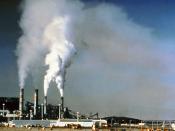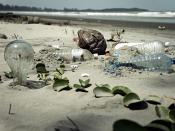Human Population:The world population in July 2008 was estimated at; 6,706,993,152, jumping up from 6.1 billion in 2000 and it is projected to rise to 9.3 billion by 2050. Exactly these specific numbers indicate a major problem for humankind and the environment. The human population holds the responsibility of negatively influencing all the important environmental issues such as atmospheric pollution, water resources, terrestrial resources and energy conservation. Therefore, in order to fix one problem after another, the root of these problems needs to be addressed first (Population reference Bureau, 2008).
Problem:Four factors come into play and are responsible for the steady increasing population on this planet and they are birth rate, death rate, immigration and emigration. So if the birth rate and immigration increases, the death rate and emigration decreases and so does the size of population. The Global Growth Rate (2008) stated, "Every minute we are adding 140 more people to the world, over 200,000 more every day, over 70 million more every year."
These numbers are staggering because as the population increases, the problems of food production, water supply, energy production, and environmental destruction become more prominent.
Contributing FactorsNegative human impacts:Food production plays an important aspect of overpopulation when trying to meet all the consumption needs on this planet. As omnivores, human beings consume almost anything regardless of the consequences and therefore animal-based food production is one cause of most major environmental problems, like global warming, air pollution and so on, which happens by destroying too much land and by not restoring any of it. "The livestock sector generates more greenhouse gas emissions as measured in CO2 equivalent, 18 percent, than transport. It is also a major source of land and water degradation," (Matthews, 2006, para.1). On top of that there is the transportation of produce that...


